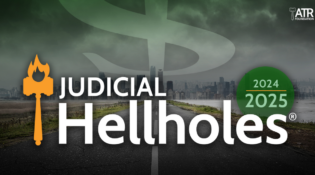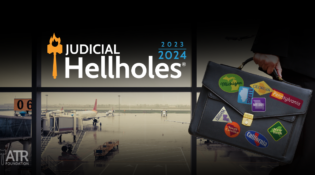LIABILITY EXPANDING LEGISLATIVE AGENDA
Last year’s report warned of the potential impact of Lavern’s Law, enacted in January 2018, on New York’s medical liability payouts. The new law extended the statute of limitations for medical liability cases alleging a missed cancer diagnosis. As a result of the state’s liability-expanding approach, New York continues to lead the nation in medical liability payouts both per capita and total amounts. In 2018, New York had an average payout of $446,461. The national average payout was $348,065, almost $100,000 less than the New York average. 1,535 claims were paid in New York in 2018, totaling $685,317,000, marking an 11% increase from 2017. Rather than address the growing medical liability crisis in the state, the New York legislature failed to enact meaningful reforms and considered legislation that would further exacerbate the problem.
S. 4006, introduced by Senate Judiciary Chair Senator Brad Hoylman (D), would expand existing law to permit the families of wrongful death victims to recover additional compensation for subjective things like loss of companionship and consortium, loss of nurture and guidance, pecuniary injuries, including loss of support or assistance, and grief or anguish. It is estimated that, if enacted, insurance premiums paid by New York residents and businesses will increase by $2.2 billion, or 12.6%. Medical professional liability premiums are predicted to increase by 47%, thereby further discouraging doctors from practicing medicine in New York. The bill remains in the Senate Finance Committee and is expected to advance in 2020.
Two liability expanding bills that passed both houses of the legislature, mostly on party lines, await action from the governor. S.6552, introduced by Senator James Skoufis (D) permits a plaintiff to recover directly against a third-party defendant when the judgment against the original defendant has not been satisfied after thirty days. Troublingly, if signed into law, this would allow plaintiffs to bypass defendants and collect directly from a party which they had no legal standing to sue.
Another bill, S.6081, introduced by Senate Judiciary Chair Brad Hoylman (D), would require settling co-defendants to choose between limiting their liability by either their equitable share of fault or by the remaining balance of the final jury award before the award is determined. If signed into law, a plaintiff could receive more damages than the amount awarded by a jury verdict. Defendants in asbestos cases will be at an even greater disadvantage because other defendants rarely know the identities or settlement amounts of all parties in the litigation.
Senator Kevin Thomas (D) introduced the New York Privacy Act, which would, among other things, create a private right of action for individuals to sue companies over alleged data privacy violations. This measure is more expansive than California’s recently passed Consumer Privacy Act, which does not contain a private right to file a lawsuit and only applies to businesses that take in more than $25 million in gross revenue.
Lastly, Governor Cuomo signed legislation that expands liability for workplace discrimination. The new law lowers the threshold for filing a complaint by eliminating the need for “severe or pervasive” behavior, extends the statute of limitations to file such cases, bans non-disclosure agreements related to discrimination claims, prohibits arbitration of discrimination claims, and authorizes punitive damages. These changes are expected to lead to a flurry of new lawsuits and will expand liability even for companies that have abided by all of the laws and regulations to create and promote a safe workplace.
 New York trial lawyers continue to target small businesses with American with Disabilities Act claims, and the number of consumer lawsuits filed against the food and beverage industry remain on the rise. The legislature pursued a very plaintiff-friendly agenda, while much-needed reform to New York’s “Scaffold-Law” continued to stall.
New York trial lawyers continue to target small businesses with American with Disabilities Act claims, and the number of consumer lawsuits filed against the food and beverage industry remain on the rise. The legislature pursued a very plaintiff-friendly agenda, while much-needed reform to New York’s “Scaffold-Law” continued to stall.




